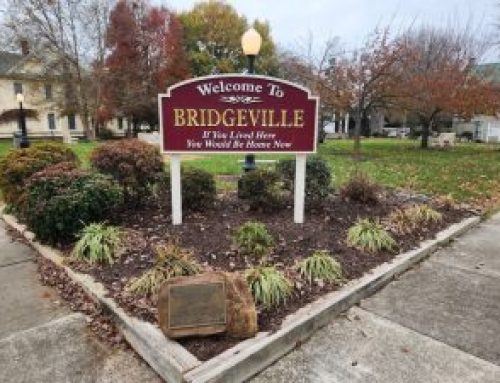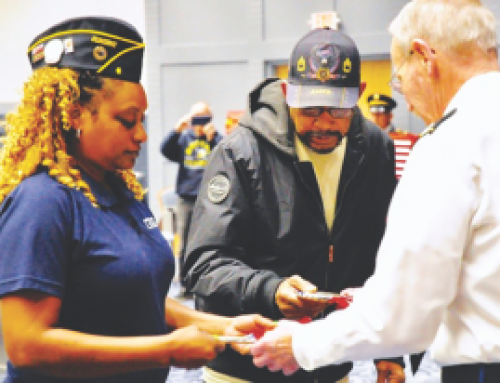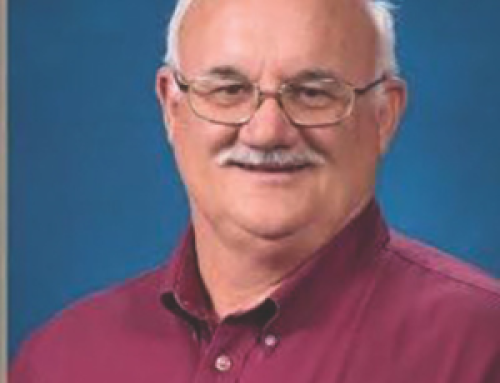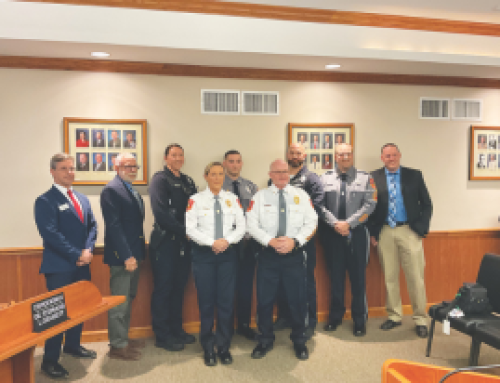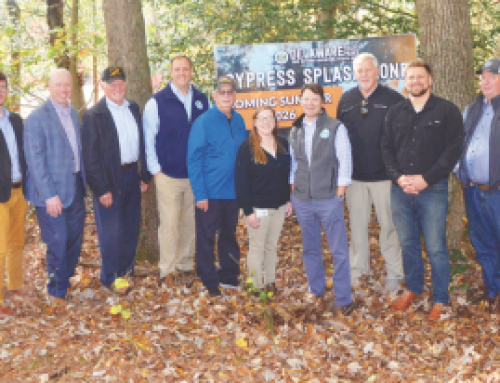For Larry Manlove, life on the Eastern Shore has always been about family, faith, and a deep connection to the land and water. Born and raised in Seaford, he has lived a life steeped in tradition, moving only once in his lifetime—to Lewes, a decade ago to be closer to his youngest son and grandchildren.
After earning a degree in business and marketing from the University of Delaware in 1969, Manlove joined his father, Milton Manlove, in the family’s “Manlove’s Automotive Parts” business. For nearly two decades, they worked together until selling the business in 1988. From there, he and his wife Sue, his high school sweetheart, started two ventures: “Manlove Lawn & Landscape” and “Olde Mill Craft & Collectibles.” It was through the latter that Manlove discovered his talent for woodworking, specifically creating reproductions of colonial furniture. Today, he still operates the lawn care business but has channeled his woodworking skills into crafting intricate wooden duck decoys.

Larry Manlove, a graduate of Seaford High School and former partner with his father, Milton, in the family automotive parts business, now enjoys creating waterfowl decoys that celebrate his lifelong passion. Here he creates a decoy in his shop at his home in Lewes. Photo by Tony Windsor
Manlove’s appreciation of ducks began as a young boy while hunting waterfowl with his father along the Nanticoke River. His dad owned marshland across from Bivalve, Md., where they hunted ducks from 1955 to 1972. “I always admired the flight patterns and feather colors of ducks,” Manlove recalls. “Those early experiences sparked a lifelong passion for both hunting and the artistry of decoy-making.”
The Manlove family had personal connections to the legendary Ward brothers of Crisfield, whose decoy carvings became world-renowned. Manlove’s father and Lem and Steve Ward were good friends and hunting buddies. “We hunted using Ward brothers’ working decoys,” Manlove said. “The functional decoys of that era were simple in design and turned on a lathe with minimal detail. By the mid-1960s, however, the trend shifted toward more decorative and highly valued decoys.”
In April 2024, inspired by an iron sink box decoy his father had given him 50 years earlier, Manlove decided to carve a matching wooden hen canvasback. Sink box decoys, originally made of heavy pig iron, were used from 1830 until 1920 when the practice was outlawed due to overhunting. The iron decoys, designed to camouflage sink boxes, are now rare collectibles, fetching up to $500 each. His handcrafted wooden replicas sell for $65, a bargain, considering their artistry and historical significance.
To date, Manlove has crafted 80 wooden sink box decoys, including canvasbacks, redheads, bluebills, and buffleheads. These ducks were commonly used with sink boxes and are iconic to the Eastern Shore. His favorite is the canvasback, often called the “King of Ducks” for its striking maroon iridescence and impressive speed, reaching up to 72 miles per hour.
Manlove’s decoys have found homes across the country, from North Carolina to Mississippi to Tennessee, and are cherished by local hunters and collectors. “They display beautifully with their flat bottoms,” he says. This summer, he passed his craft onto his grandsons, teaching them to carve and paint their own decoys. His eldest grandson, 14, chose a bluebill, while his younger grandsons, ages 9 and 12, crafted canvasbacks. “All three are avid hunters and really took to the art well,” he said.
Manlove’s admiration for decoy makers spans generations, from the Ward brothers and Paul Gibson to modern artisans like Charles Jobes of Havre de Grace, Md. “He’s the champion of decorative working decoys,” he said.
Throughout his life, he and wife, Sue, have viewed their creative talents as “blessings from God.” Together, they have served their community as Sunday school teachers, youth leaders, and board members for various church initiatives, including the Appalachia Service Project. Today, Manlove serves as treasurer and secretary for Delmarva Adult & Teen Challenge, a program that has helped over 500 men and women recover from addiction in the past 15 years.
“To God be the glory,” Manlove says with heartfelt conviction. Whether through his decoys, his family, or his faith, he continues to honor the traditions and values that have shaped his extraordinary life.

